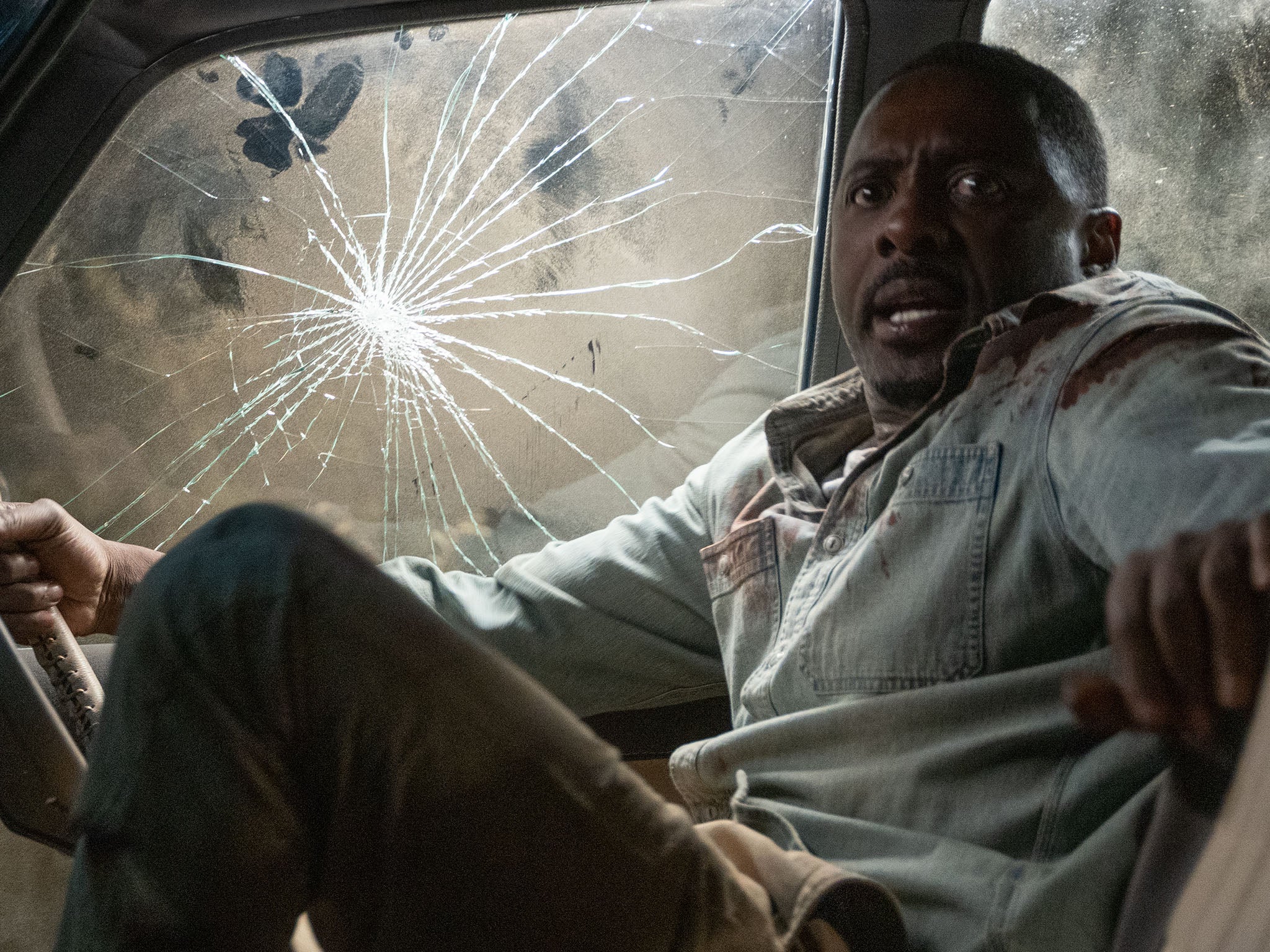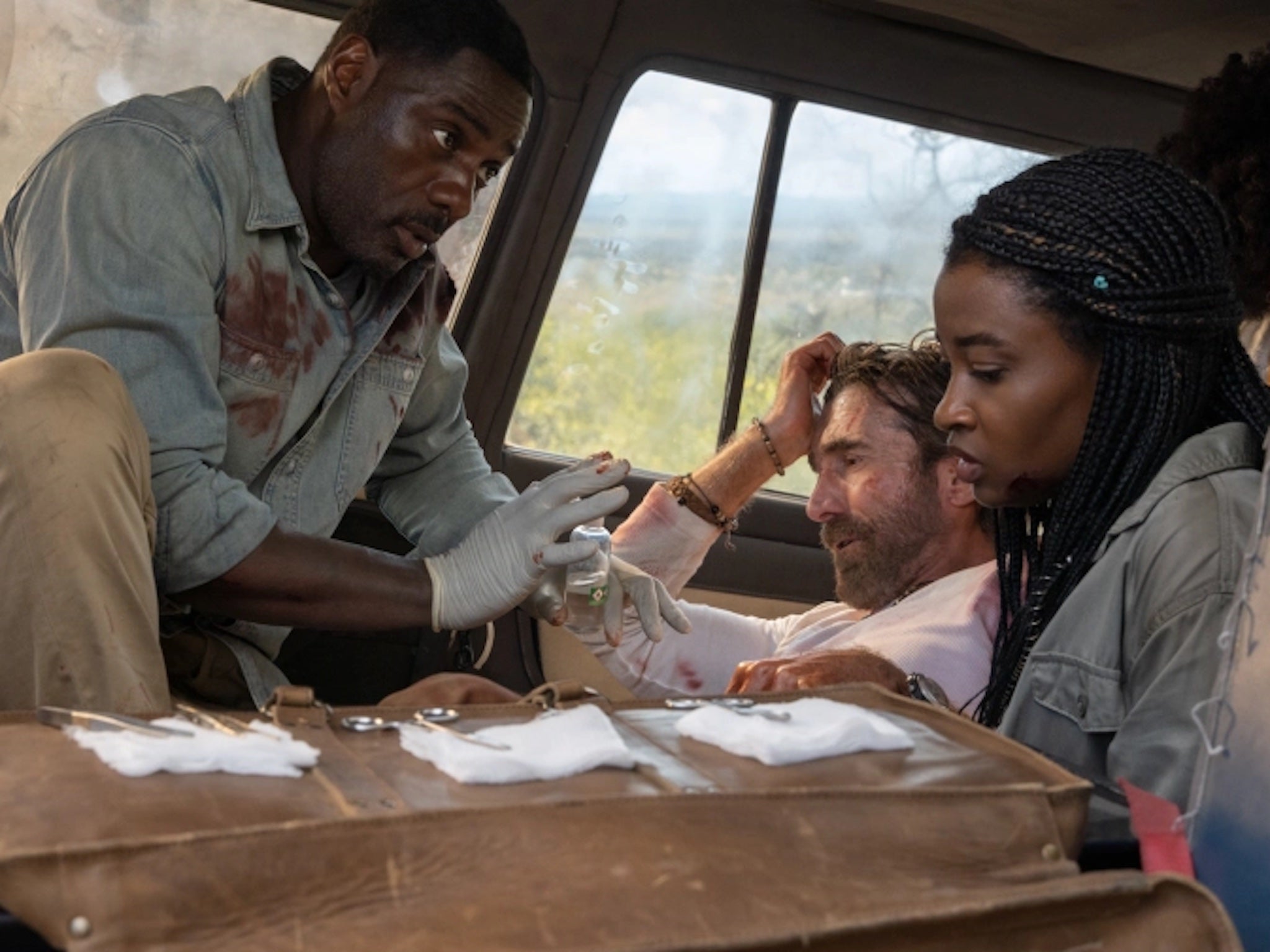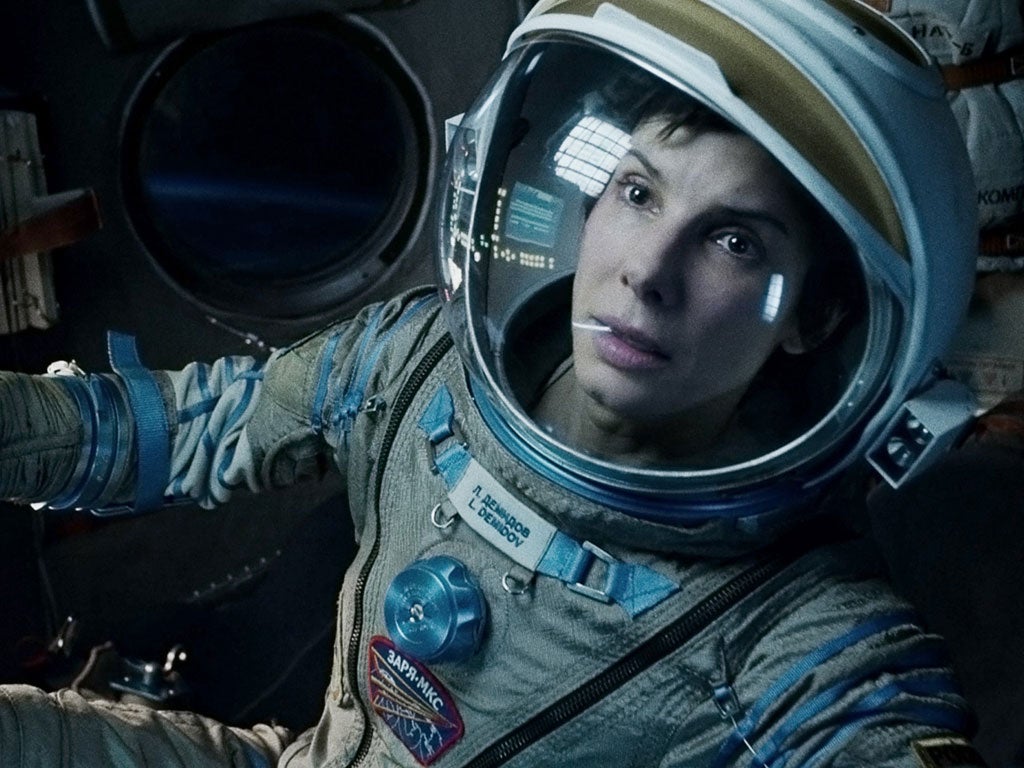Lions, sharks, divorce: Survival films keep trying to pull emotion from carnage – do we care?
In ‘Beast’, an absent father finds himself in the lion’s den. It’s the latest survival flick whose hero works through personal troubles facing a life-or-death situation. Geoffrey Macnab looks at the potential for emotional depth behind superficial thrills

Imagine this: you’re staring through your windscreen at a ravenous Barbary lion who very much wants to put your head between its jaws. Things get worse. You’ve foolishly left the passenger window open. The animal is now trying to squeeze its way into your vehicle. You’re kicking at its mane and mouth while it snaps and swipes at your ankles and legs, ripping the cloth of your trousers and turning your skin into a mosaic of red.
This is the predicament Idris Elba finds himself in early on in his new film Beast, out this week. The lion in question has gone “rogue” because poachers have killed its pride. It will devour any human it can find. If Elba’s character, Dr Nate Samuels, doesn’t show any particular sign of terror, it’s because the lion is perhaps a welcome distraction from the wrath of his teenage daughters. He split up from their mother shortly before she contracted terminal cancer, and the girls blame him for not being there when they needed him most. “My dad is not much of a hugger,” one daughter observes with withering contempt. Nate may not be the touchy-feely type but he can now redeem himself by keeping his kids out of the lion’s way.
Beast, directed by Icelandic filmmaker Baltasar Kormákur, is the latest in a very long line of survival thrillers in which extreme danger has a cathartic as well as a destructive effect. As Elba recently explained on a US chat show, the film is really about “the beast of mourning, the beast of family ties and how that all comes together”. When Nate bandages up his child, there is a symbolic weight to his actions. The hurt here is as much psychological as it is physical.
In survival films like this, characters confront forces over which they have little or no control. “You versus him. That is not a fight you’re designed to win,” the doctor is warned by a ranger as he takes on the lion in its savanna habitat. He puts up a decent fight. Nonetheless, as oblivion beckons, Nate can’t help but become distracted musing on his shortcomings as a father and husband. The lion may be prowling outside, but there’s already an elephant in the room.
Elba isn’t the only one who struggles to focus on the life-or-death matter at hand. Similar characters in similar films find their minds likewise drifting off to personal issues in the face of grave danger. A meteor may be hurtling toward the earth. Zombies, terrorists, aliens, vigilantes, or sharks may be circling. Disease may be ravaging humanity. Whatever the scourge that confronts them, the films’ beleaguered protagonists always find something closer to home to fret about.
The question is whether viewers appreciate such deep-layered characterisation. Those watching B movies about rampaging lions, sharks or grizzly bears are generally in search of thrills. They’re looking for action and bloodshed, not introspective case studies about bad faith and family betrayal. Nothing can beat the fairground-like adrenaline rush when risk is at its highest. Take the moment at the start of Beast when there is suddenly a close-up of the lion with its mouth wide open, ready to devour its prey. Talk about a money shot. Some hapless poacher hangs upside down from a trap he himself set and we peer at the predator from the perspective of this man who, in a moment, will be swallowed up. The instant the lion springs, the film cuts to black, giving the illusion that we too have been engulfed in the abyss.
Another pleasure of survival thrillers lies in speculation. What would I do in the same circumstances? Would I stay in the car? Would I make a run for it? If it were me hiding up a tree, would I be able to stay as still and silent as Idris Elba… even as snakes and insects creep and crawl across my arm?

Survival films deal with big questions about life and death, but the everyday details matter too. How does a climber with a broken leg in Touching the Void (2003) hobble his way down the mountain? What do the characters fleeing the aliens in A Quiet Place (2018) do for food? How does Sandra Bullock’s astronaut in Gravity (2013) fix the oxygen supply aboard the spaceship?
These questions cast long shadows over their respective films and the plausibility of their plots. They explain why there is so much satisfaction to be had watching Ridley Scott’s sci-fi survival drama The Martian (2015) and seeing the painstaking way in which the stranded astronaut played by Matt Damon tends his beloved crop of potatoes. For a few moments, Scott’s dark fable about a Robinson Crusoe-like space traveller a very long way from home begins to seem like a gardening documentary about a man, his allotment and how best to grow vegetables in the Red Planet soil. Fighting against aliens, predators and the elements is all very well, then, but it is only one part of the story. Surviving on screen is also about patience, good hygiene and husbandry, common sense, and DIY.

Often, in survival movies, the moments that seem the most banal can be the most resonant. During the quiet interludes of Beast, when the lion is sleeping off a tranquiliser or is distracted by other prey, the film deals with the medical challenges its characters face. Using his crackly walkie-talkie, Dr Nate explains to a stranded game ranger (Sharlto Copley) how to sterilise a knife with a cigarette lighter. The ranger then performs gruesome makeshift surgery on a huge rip in his leg. Nate himself makes a great fuss of the stitches he must sew in his daughter’s wounds. After all, it would be very galling to rescue your daughter from a lion only to watch her die from gangrene because you hadn’t cleaned the scalpel properly.
Survival films also only really work if there is something – or somebody – worth surviving for. Early on in Gravity, George Clooney’s character asks his fellow space traveller (Bullock): “Is there someone down there, looking up, thinking about you?” She had a daughter who died. The film then isn’t just a story about a woman in a space suit making heroic efforts to stay alive; it’s an account of how a bereaved mother copes with her overwhelming grief. Family links have a similar significance in Christopher Nolan’s Interstellar (2014). Matthew McConaughey’s mission is to find a new planet habitable for humans but what really drives him to travel through the wormholes of time and space is the desire to make contact with his daughter.

It’s not just the memories of loved ones which inspire extraordinary feats of endurance in survival films. The yearning for revenge also acts as a very powerful spur. During the first part of Alejandro González Iñárritu’s Oscar-winner The Revenant (2015) Leonardo DiCaprio’s frontiersman is mauled by a bear and left for dead. The only way he can protect himself against hypothermia is by sleeping inside the carcass of a horse, allowing the animal’s rotting guts to keep him warm. It’s all worth it, though, if he can later kill the man (Tom Hardy) who abandoned him in the first place.
Survival films are generally framed as triumphant tales of human resilience. Soldiers live through years of torture in Japanese prisoner-of-war camps (William Holden in David Lean’s The Bridge on the River Kwai). Young mothers overcome purgatorial captivity at the hands of deranged psychopaths (Brie Larson in Lenny Abrahamson’s Room). Surfers somehow stay alive in shark-infested waters (Blake Lively in Jaume Collet-Sera’s The Shallows).
Ultimately, the heroes of survival films vanquish their inner demons the same way they vanquish the physical threat growling in their faces. That’s the paradox. In these movies, the best way to get over one’s trauma is to confront another. The lesson here is that shock treatment works. Pitting yourself against a great white, grizzly or king of the jungle is far more effective than sitting in any psychiatrist’s chair. Cheaper too.
‘Beast’ is out in UK cinemas on 26 August






Join our commenting forum
Join thought-provoking conversations, follow other Independent readers and see their replies
Comments